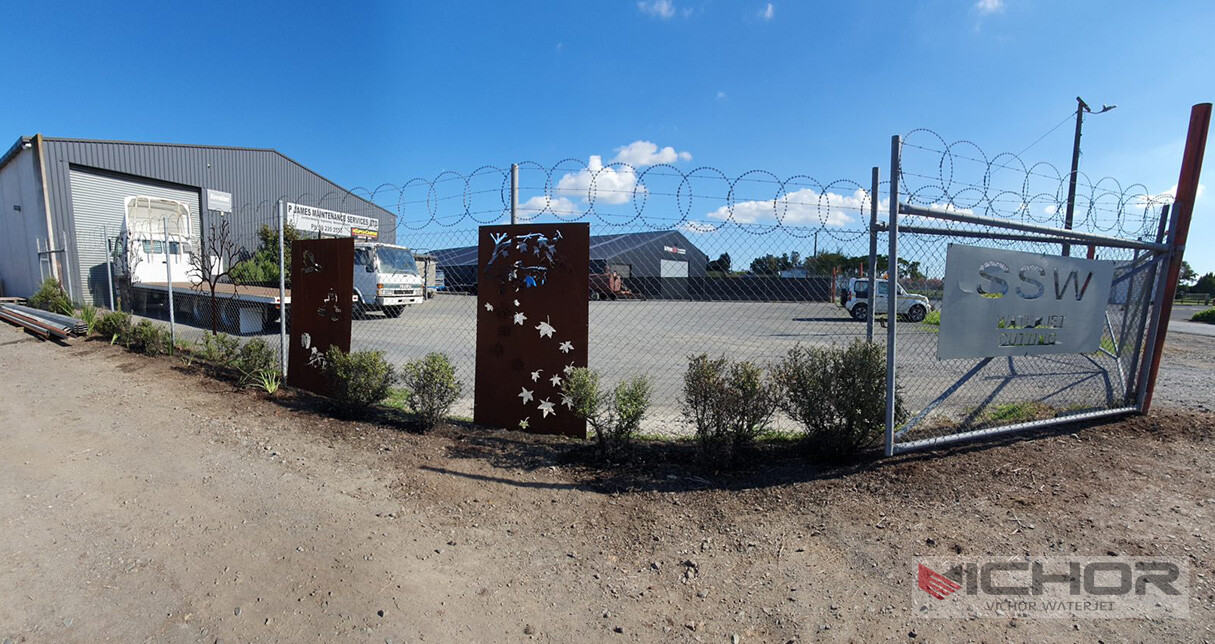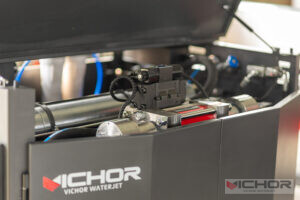
Water Jet Mill: Transforming Material Processing with High-Precision Technology
In today’s fast-paced industrial landscape, efficiency and precision are paramount. Imagine a tool that can slice through tough materials like metal, stone, or composites with the ease of a hot knife through butter, all while minimizing waste and environmental impact. This isn’t science fiction—it’s the reality of the water jet mill. As industries seek innovative solutions to enhance productivity, the water jet mill has emerged as a game-changer, offering unparalleled accuracy and versatility. Whether you’re in manufacturing, aerospace, or construction, understanding this technology can unlock new levels of performance. In this article, we’ll dive deep into the world of water jet mills, exploring their mechanics, applications, and benefits. By the end, you’ll see why this tool is becoming a staple in modern workshops and factories worldwide.
The term “water jet mill” refers to a cutting and milling system that uses a high-pressure stream of water, often mixed with abrasive materials, to erode and shape various substances. Unlike traditional methods that rely on heat or mechanical force, a water jet mill operates through hydraulic energy, making it ideal for delicate or heat-sensitive materials. Its rise in popularity stems from its ability to deliver clean, burr-free cuts without altering the material’s properties. As we unravel the intricacies of this technology, you’ll discover how a water jet mill can revolutionize your operations, from reducing production times to enhancing product quality. Let’s begin by examining what exactly a water jet mill is and how it functions.
What is a Water Jet Mill?
A water jet mill is a advanced machining tool that utilizes a focused jet of water—typically pressurized to extreme levels—to cut, mill, or shape materials. This system can operate as a pure water jet for softer materials like foam or rubber, or as an abrasive water jet when combined with granules such as garnet for harder substances like titanium or ceramics. The core components include a high-pressure pump, an intensifier to amplify water pressure, a nozzle to direct the stream, and a control system for precision. The concept dates back to the mid-20th century, but recent advancements have made water jet mills more accessible and efficient. Today, they are integral to industries requiring high accuracy, such as automotive and medical device manufacturing. The versatility of a water jet mill allows it to handle complex geometries and intricate designs that other tools might struggle with, making it a preferred choice for custom projects and mass production alike.
One of the standout features of a water jet mill is its cold-cutting process. Unlike laser or plasma cutters that generate heat and can cause thermal distortion, a water jet mill maintains the material’s integrity. This is crucial for applications where structural changes could compromise safety or performance. Additionally, the environmental aspect is notable; a water jet mill produces minimal waste, as the water and abrasives can often be recycled. As we delve deeper, you’ll see how these characteristics make the water jet mill a sustainable and effective solution. In the next section, we’ll break down the operational mechanics that power this innovative tool.
How Does a Water Jet Mill Work?
The operation of a water jet mill is a fascinating blend of physics and engineering. It starts with a high-pressure pump that pressurizes water to levels exceeding 60,000 psi (pounds per square inch). This pressurized water is then forced through a small orifice in the nozzle, creating a supersonic stream that can reach speeds of up to 900 meters per second. When cutting harder materials, an abrasive material—like garnet or aluminum oxide—is introduced into the stream via a mixing tube. The abrasive particles accelerate in the water jet, effectively grinding away the target material through erosion.
This process is controlled by computer numerical control (CNC) systems, which guide the nozzle along predefined paths with micron-level accuracy. The absence of heat means there’s no heat-affected zone (HAZ), preserving the material’s original properties. For instance, when using a water jet mill on metals, it prevents hardening or warping that could occur with thermal methods. The water used is typically filtered and deionized to prevent contamination, and the entire system is designed for efficiency, with modern units offering automated adjustments for pressure and flow rate.
The precision of a water jet mill allows for intricate cuts, such as sharp corners and fine details, without the need for secondary finishing. This reduces labor costs and production time. Moreover, the ability to cut a wide range of thicknesses—from thin sheets to blocks over 20 cm thick—showcases its adaptability. As we move forward, we’ll explore the diverse applications where a water jet mill excels, demonstrating its real-world impact across various sectors.
Applications of Water Jet Mills in Industry
The versatility of the water jet mill makes it invaluable across multiple industries. In aerospace, for example, it is used to cut composite materials and alloys for aircraft components, where precision and lack of thermal damage are critical for safety. The automotive sector relies on water jet mills for shaping body parts, gaskets, and interior components, enabling rapid prototyping and custom modifications. In the construction and architecture fields, a water jet mill crafts intricate designs in stone, tile, and glass for decorative elements, facades, and flooring, offering artists and engineers alike the freedom to create complex patterns.
Another significant application is in the medical industry, where water jet mills produce precise components for surgical instruments, implants, and devices. The clean cuts ensure that materials like titanium or polymers retain their biocompatibility. Additionally, the food industry employs pure water jet systems for slicing products like pastries or frozen foods without contamination, as the process is sterile and easy to clean. Even in art and design, a water jet mill is used to sculpt metals and other materials into bespoke pieces, highlighting its role in blending technology with creativity.
The environmental sector also benefits from water jet mills in recycling operations, where they separate materials for reuse. This broad applicability stems from the tool’s ability to handle diverse substances without compromising quality. As industries evolve, the demand for water jet mills continues to grow, driven by the need for sustainable, efficient manufacturing. Next, we’ll discuss the advantages that make this technology so appealing.
Advantages of Using a Water Jet Mill
Adopting a water jet mill offers numerous benefits that enhance operational efficiency and product quality. First and foremost is precision: the technology allows for tolerances as tight as ±0.1 mm, ensuring consistent results in every cut. This is coupled with versatility—a water jet mill can process almost any material, from metals and ceramics to plastics and composites, without the need for tool changes. This multifunctionality reduces setup times and inventory costs, as one machine can handle multiple tasks.
Another key advantage is the cold-cutting nature of a water jet mill, which eliminates heat-related issues like melting, warping, or toxic fume emission. This makes it safer for operators and the environment, aligning with green manufacturing trends. Additionally, the process generates minimal kerf width (the width of the cut), reducing material waste and maximizing yield. For businesses, this translates to cost savings and higher sustainability ratings.
The water jet mill also promotes productivity through high-speed operations and automation compatibility. With CNC integration, it can run unattended for hours, boosting throughput. Maintenance is relatively straightforward, focusing on nozzle and pump upkeep, which minimizes downtime. Overall, the water jet mill stands out as a cost-effective solution that supports lean manufacturing principles. However, it’s essential to consider potential challenges, which we’ll address in the following section.
Challenges and Limitations of Water Jet Mills
While a water jet mill offers many benefits, it’s not without its drawbacks. One primary concern is operating costs: high-pressure pumps consume significant energy, and abrasive materials can be expensive, especially for continuous use. The initial investment in a water jet mill system can also be substantial, potentially deterring small businesses. Moreover, the process can be slower for very thick materials compared to some alternatives like plasma cutting, which might affect project timelines.

Noise and water management are additional challenges. The operation of a water jet mill can generate loud sounds, requiring hearing protection and soundproofing measures. Water usage and disposal need careful handling to prevent environmental contamination; recycling systems can mitigate this but add to complexity. Furthermore, abrasive particles may pose inhalation risks if not properly contained, emphasizing the need for adequate ventilation and safety protocols.
Despite these limitations, advancements in technology are addressing many issues. For instance, newer models feature energy-efficient pumps and improved abrasive recovery systems. By weighing these factors, businesses can effectively integrate a water jet mill into their operations. Looking ahead, the future of this technology holds even more promise, as we’ll explore next.
The Future of Water Jet Mill Technology
The evolution of water jet mill technology is poised to drive further innovations in manufacturing. Trends include the integration of artificial intelligence (AI) and IoT (Internet of Things) for predictive maintenance and real-time optimization, enhancing the efficiency and lifespan of water jet mill systems. Researchers are also developing eco-friendly abrasives and water-recycling techniques to reduce environmental impact. Additionally, advancements in nozzle design and pressure control aim to increase cutting speeds and accuracy, making water jet mills competitive with other high-tech methods.
As industries embrace Industry 4.0, the water jet mill could become part of smart factories, seamlessly connecting with other automated processes. This would enable greater customization and on-demand production, catering to niche markets. The growing focus on sustainability may also spur adoption, as water jet mills align with circular economy principles by minimizing waste. Ultimately, the water jet mill is set to remain a cornerstone of precision engineering, adapting to future demands while maintaining its core benefits.
In conclusion, the water jet mill represents a powerful tool that combines precision, versatility, and environmental consciousness. From its intricate workings to its wide-ranging applications, it offers solutions that modern industries crave. By understanding its strengths and limitations, businesses can harness its potential to stay competitive. As technology advances, the water jet mill will likely become even more integral to global manufacturing landscapes.
Frequently Asked Questions About Water Jet Mills
Q1: What is the primary use of a water jet mill?
A1: A water jet mill is primarily used for cutting, milling, and shaping a wide variety of materials, including metals, ceramics, plastics, and composites. It excels in applications requiring high precision and minimal thermal impact, such as in aerospace, automotive, and medical industries.
Q2: How does a water jet mill differ from traditional cutting methods?
A2: Unlike traditional methods that often use heat or mechanical force, a water jet mill relies on a high-pressure stream of water—sometimes with abrasives—to erode materials. This cold-cutting process avoids heat-affected zones, reduces material distortion, and allows for intricate designs without secondary finishing.
Q3: What materials can a water jet mill handle?
A3: A water jet mill can process nearly any material, from soft substances like rubber and foam to hard ones like titanium, stone, and glass. Its versatility makes it suitable for diverse industries, though the choice between pure water jet and abrasive water jet depends on material hardness.
Q4: Are there any safety concerns when operating a water jet mill?
A4: Yes, safety concerns include high noise levels, high-pressure hazards, and potential inhalation of abrasive particles. Proper precautions, such as using protective equipment, ensuring adequate ventilation, and following manufacturer guidelines, are essential to minimize risks.
Q5: What is the typical maintenance required for a water jet mill?
A5: Regular maintenance for a water jet mill includes inspecting and replacing nozzles, checking high-pressure pumps for leaks, cleaning water filtration systems, and monitoring abrasive delivery systems. Preventive maintenance helps ensure optimal performance and longevity, typically following a schedule based on usage hours.
Q6: Can a water jet mill be used for 3D machining or only flat surfaces?
A6: While commonly used for 2D cutting, a water jet mill can also perform 3D machining tasks, such as beveling, drilling, and contouring, with advanced CNC controls. However, its primary strength lies in flat surface processing, and complex 3D work might require specialized setups or complementary technologies.
This comprehensive overview highlights why the water jet mill is a transformative technology, and as you consider integrating it into your operations, these FAQs should address common queries. If you have more questions, consulting with experts can provide tailored insights for your needs.
continue reading
Related Posts
- 1352 words6.8 min read
- 1378 words6.9 min read



